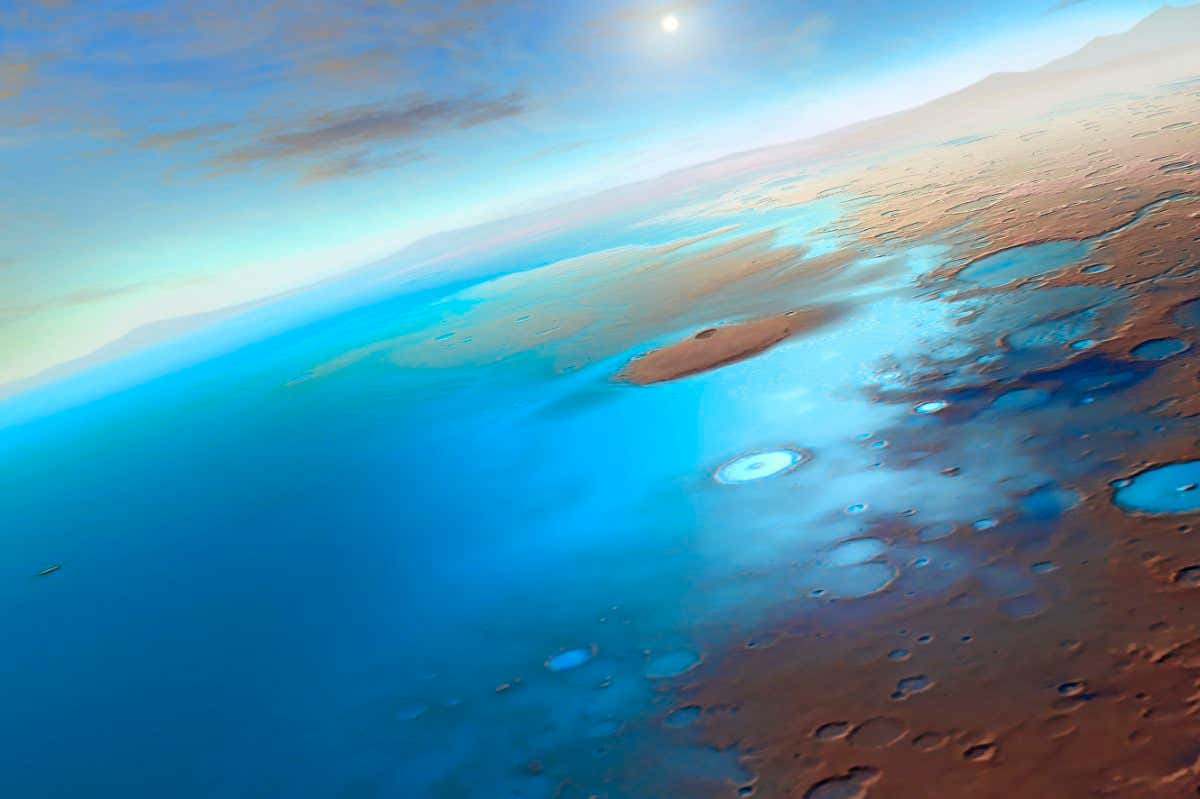
© MARK GARLICK/SCIENCE PHOTO LIBRARY/GETTY
Scientists have found a significant reservoir of liquid water deep within the Martian crust using seismic data from NASA’s Mars Insight Lander, which collected four years of vibrations, or Mars quakes, since its landing in 2018.
By analyzing how seismic waves traveled through the planet, researchers detected liquid water 10 to 20 km beneath the surface. While Mars has frozen water at its poles and traces of water vapor in its atmosphere, this is the first direct evidence of liquid water on the planet.
The findings, published in the Proceedings of the National Academy of Sciences (PNAS), offer insight into where much of Mars’ ancient water—once visible through rivers and lakes—went.
Some water was lost to space when Mars’ atmosphere eroded, but large amounts appear to have moved underground, similar to water reservoirs on Earth.
Though there may be substantial liquid water underground, reaching it poses challenges for future Mars missions, as drilling 10 to 20 km into Mars' crust is difficult. Nonetheless, this discovery opens up possibilities in the search for life, as liquid water is essential for sustaining life, and any habitable environments on Mars might now exist deep below the surface.